This post may contain affiliate links. Please read our disclosure policy.
Discover the joys of baking with this Mini Irish Soda Bread recipe, a comforting and easy-to-make bread perfect for any meal. This small-loaf version of the traditional Irish soda bread, known for its tender crumb and golden crust, is ideal for small gatherings or as a personal treat. Featuring a delightful texture with a subtle hint of sweetness, this yeast-free bread is a staple of Irish cuisine and is an excellent choice for beginner bakers or anyone looking to easily create a delightful loaf of quick bread.
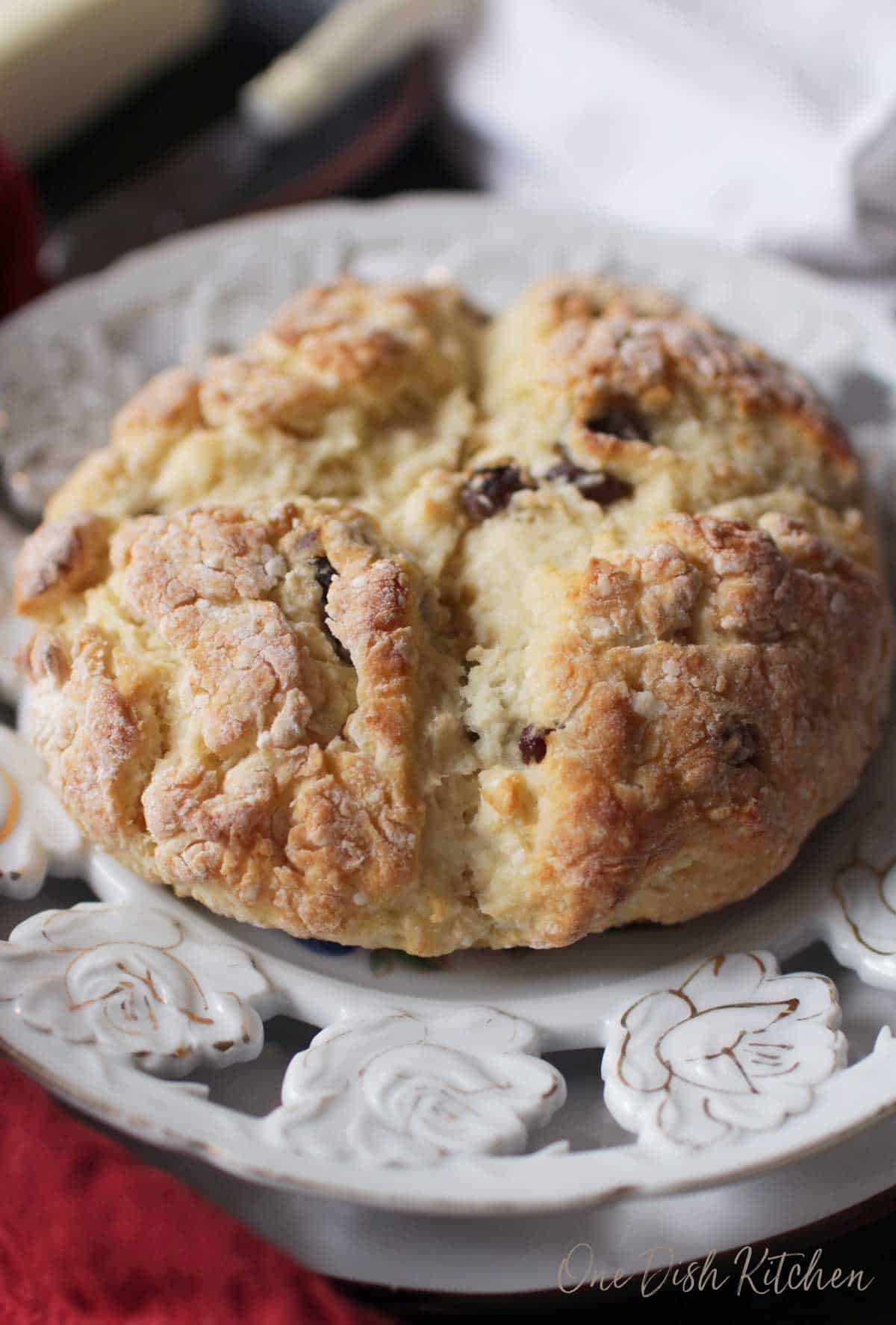
Serve this small loaf of Irish Soda Bread with a bowl of Irish Stew or Colcannon or enjoy it with your morning tea or coffee with a dollop of homemade jam.
Why You’ll Love This Irish Soda Bread Recipe
- Effortless Baking: With no yeast needed and straightforward instructions, this bread recipe is delightfully easy.
- Quick Preparation: It’s perfect for when you want fresh bread without spending hours in the kitchen.
- Versatile Pairing: This bread goes wonderfully with soups, stews, or simply butter.
- Customizable: Adjust the sweetness to your taste or add ingredients like currants or caraway seeds.
- Charming Tradition: Experience a piece of Irish heritage right in your kitchen.
RELATED: Best Soup Recipes For One
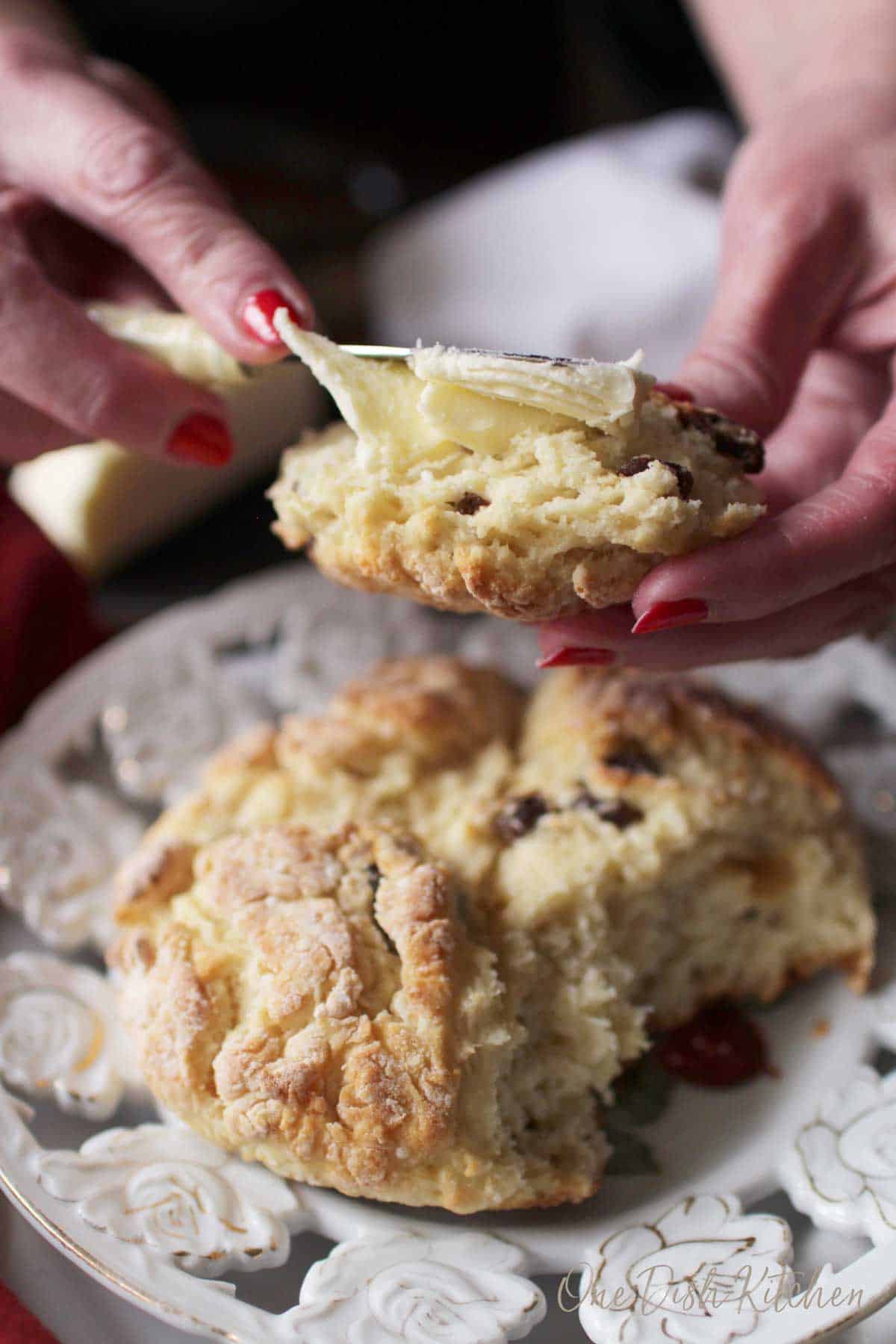
Ingredients And Substitutions
If you have any ingredients leftover from this easy Irish soda bread recipe, check out our Leftover Ingredients Recipe Finder.
- All-Purpose Flour: The foundation of this recipe. All-purpose flour provides the perfect balance of softness and structure for the bread. If you’re looking for a gluten-free option, try a gluten-free all-purpose flour blend.
- Granulated Sugar: A small amount enhances the bread’s flavor with a subtle sweetness. If you prefer a less sweet bread, you can reduce the quantity or omit it entirely.
- Salt: A key ingredient for flavor enhancement. Salt brings out the natural flavors of the other ingredients.
- Baking Soda: The leavening agent in this recipe. Baking soda reacts with the acidity in buttermilk, causing the bread to rise and become fluffy. Ensure your baking soda is fresh for the best results.
- Cold Salted Butter: Provides moisture and richness. The use of cold butter helps to create a tender crumb in the bread. If you only have unsalted butter, add an extra pinch of salt to the recipe.
- Raisins, Currants, or Caraway Seeds: These are optional additions. Raisins or currants add a sweet, chewy texture, while caraway seeds offer a unique, slightly spicy flavor. Feel free to leave these out based on your preference and if you have leftover raisins, consider using them in a small batch of Hermit Cookies, Oatmeal Raisin Cookies or Cream Scones.
- Egg Yolk: Adds richness and color to the bread. If you’re wondering what to do with the leftover egg white, save it and consider using it our other egg white recipes like Meringues or a Mini Texas Sheet Cake.
- Buttermilk: Essential for its reaction with baking soda, which helps the bread rise. No buttermilk? No problem! Create a homemade version by combining ½ cup (112 milliliters) of milk with 1 tablespoon of lemon juice or white vinegar. Let it sit at room temperature for about 10 minutes before using. If you’ve got a little buttermilk leftover from this recipe, consider using it in a mini Buttermilk Pie, Butter Swim Biscuits, or a small batch of Chicken Nuggets.
Recipe Variations
Looking to mix things up? Here are some tasty variations:
- Fruit-Filled Irish Soda Bread: Add raisins, currants, or other dried fruit for a sweet twist.
- Irish Soda Bread With Fresh Herbs: Mix in herbs like rosemary or thyme for an aromatic flavor.
- Seed-Topped Soda Bread: Sprinkle the top with seeds like sesame or pumpkin before baking.
- Cheesy Irish Soda Bread: Incorporate shredded cheese into the dough for a savory version.
How To Make Irish Soda Bread
These step-by-step photos and instructions help you visualize how to make a small loaf of Irish Soda Bread. See the recipe box below for ingredient amounts and full recipe instructions.
Step 1: Combine Dry Ingredients
Start by mixing the all-purpose flour, granulated sugar, salt, and baking soda in a large bowl. This step ensures that all the dry ingredients are evenly distributed, setting the foundation for a well-risen and flavorful bread.
Step 2: Incorporate Butter
Cut the cold salted butter into the flour mixture. The goal is to achieve a coarse crumb-like texture. This is crucial for creating a tender and flaky bread. After achieving the desired consistency, stir in the raisins (if using).
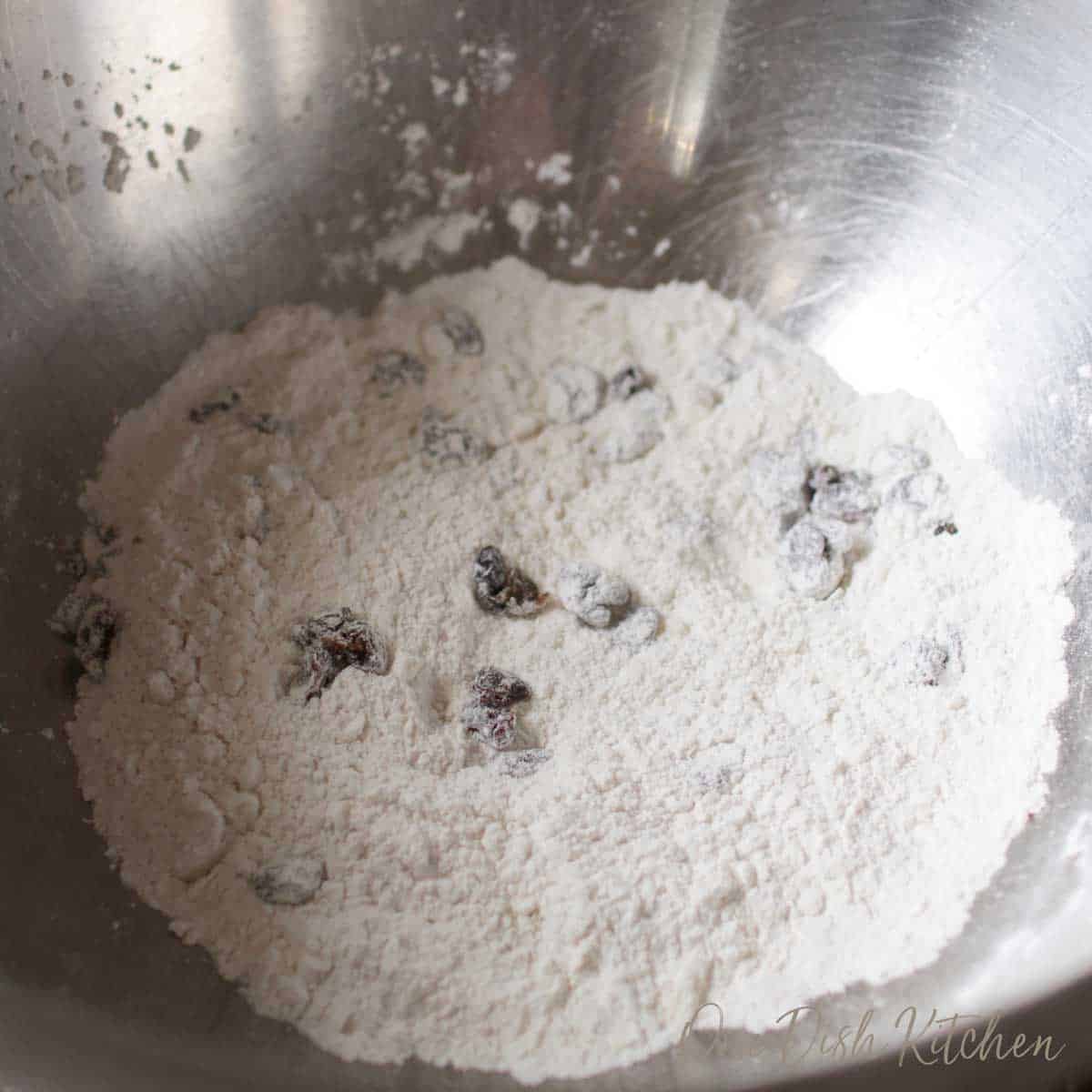
Step 3: Mix Egg Yolk and Buttermilk
In a separate, smaller bowl, whisk together one egg yolk and buttermilk. This combination adds richness and moisture to the bread. Once whisked, gently pour this mixture into the bowl with the dry ingredients.
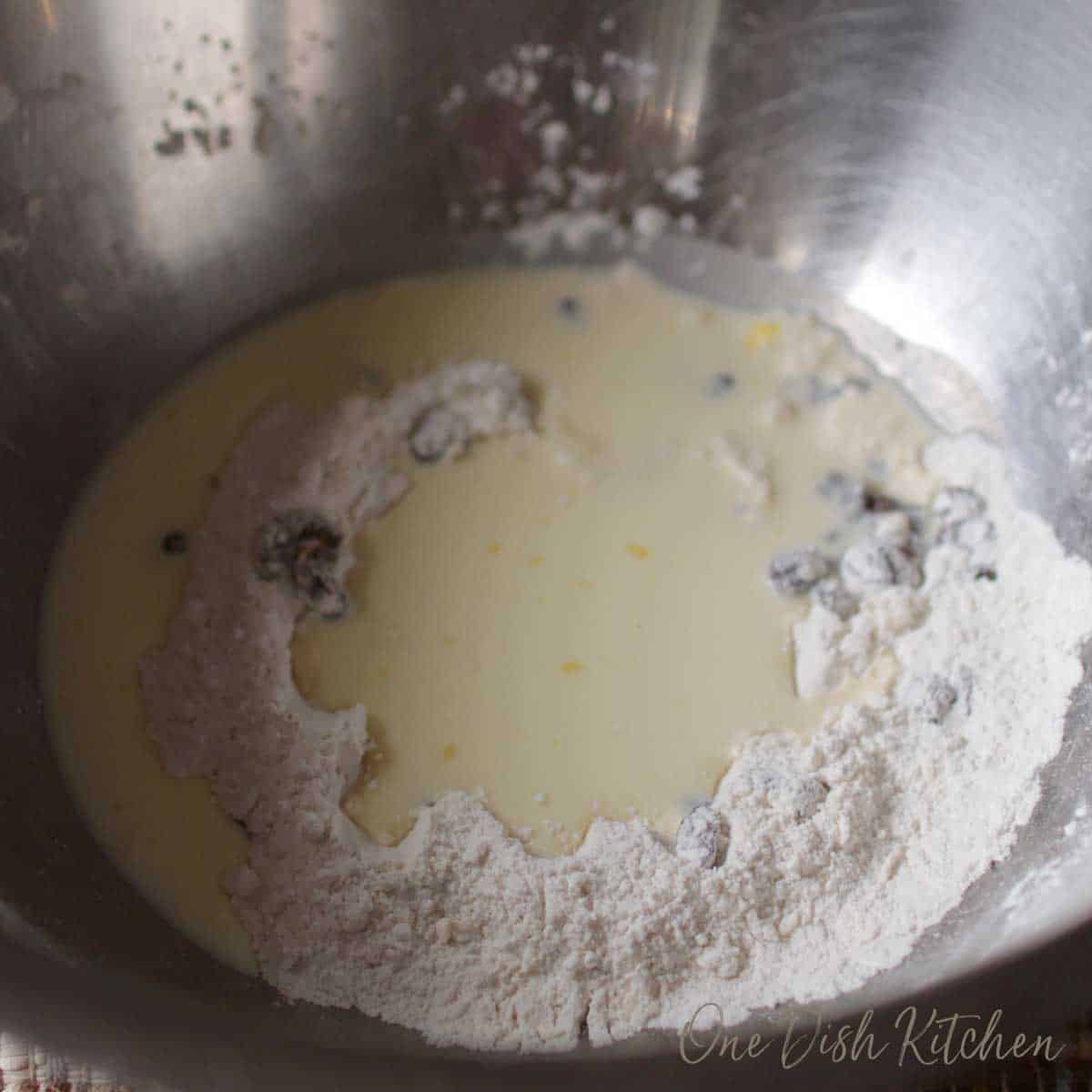
Step 4: Form the Dough
Stir the wet and dry ingredients together until just combined. Then, turn the dough onto a lightly floured surface. Knead the dough gently, just enough to bring it together, then shape it into a small, round loaf. Remember, over-kneading can lead to a tougher bread.
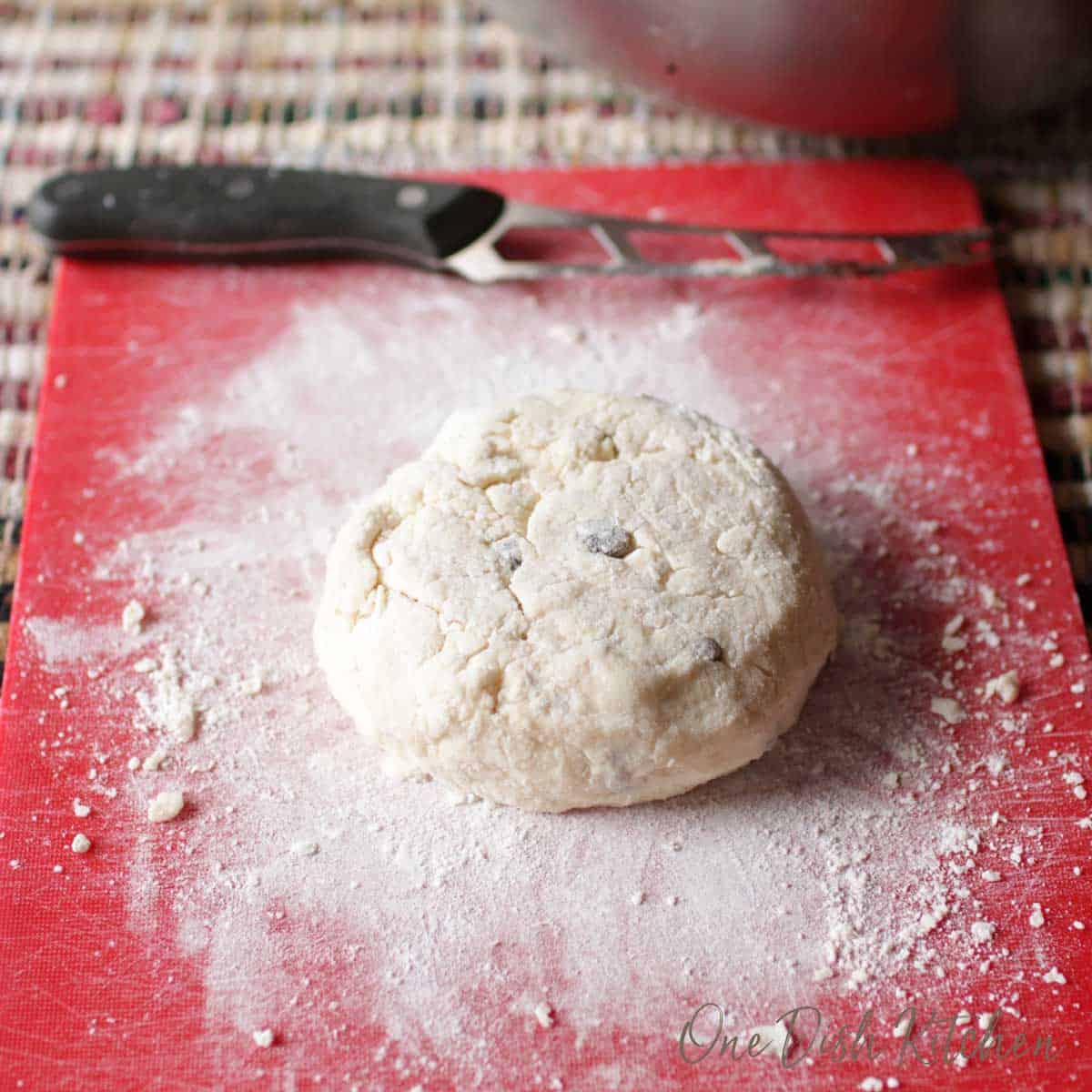
Step 5: Score the Dough
Place the formed dough onto your baking sheet. Using a sharp knife, score a large “X” about 1/2-inch deep across the top of the dough. This traditional scoring method is not only aesthetically pleasing but also helps the bread bake more evenly.
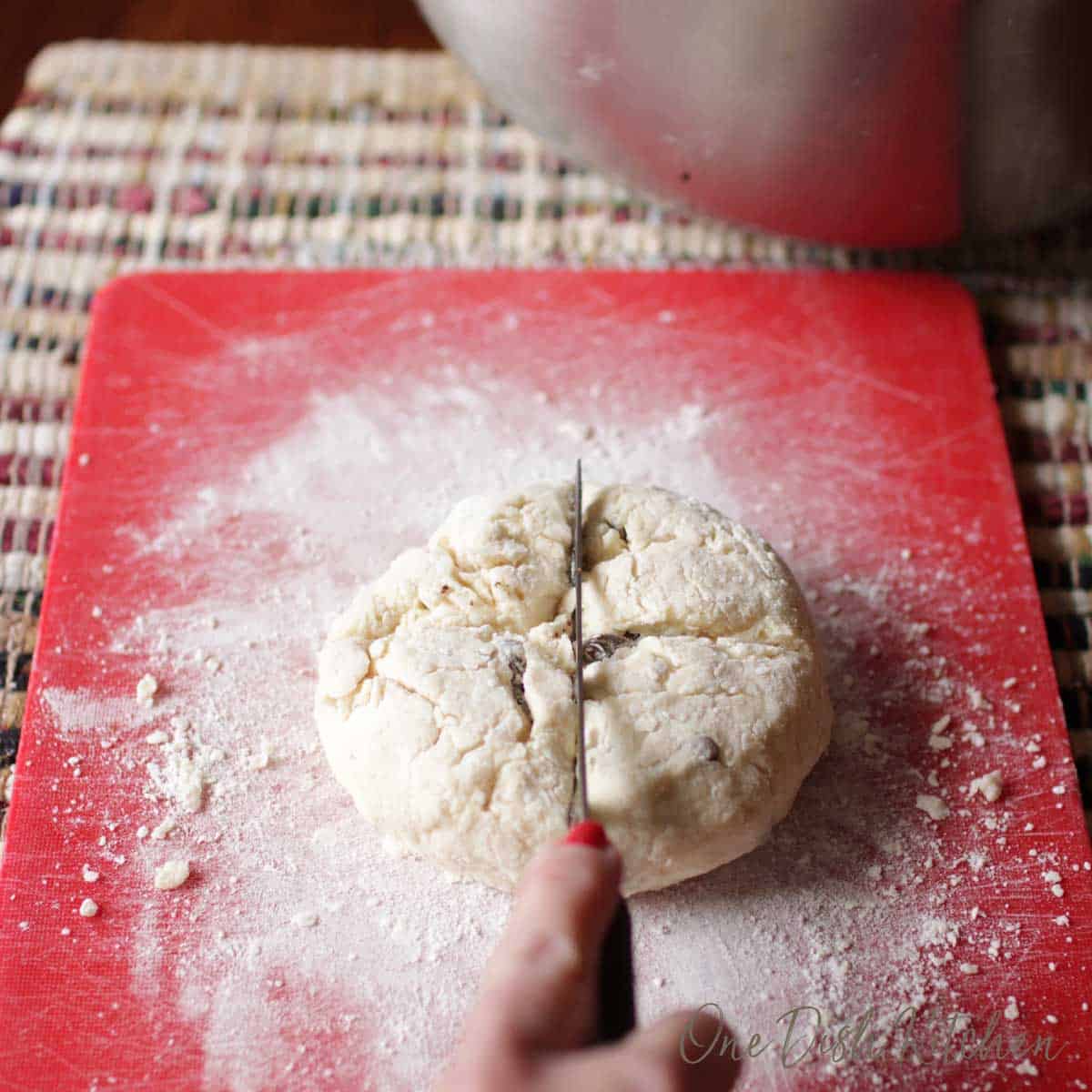
Step 6: Bake to Perfection
Bake the soda bread in a preheated oven for approximately 40 minutes. The bread should be golden brown and sound hollow when tapped on the bottom. This indicates that it’s perfectly baked.
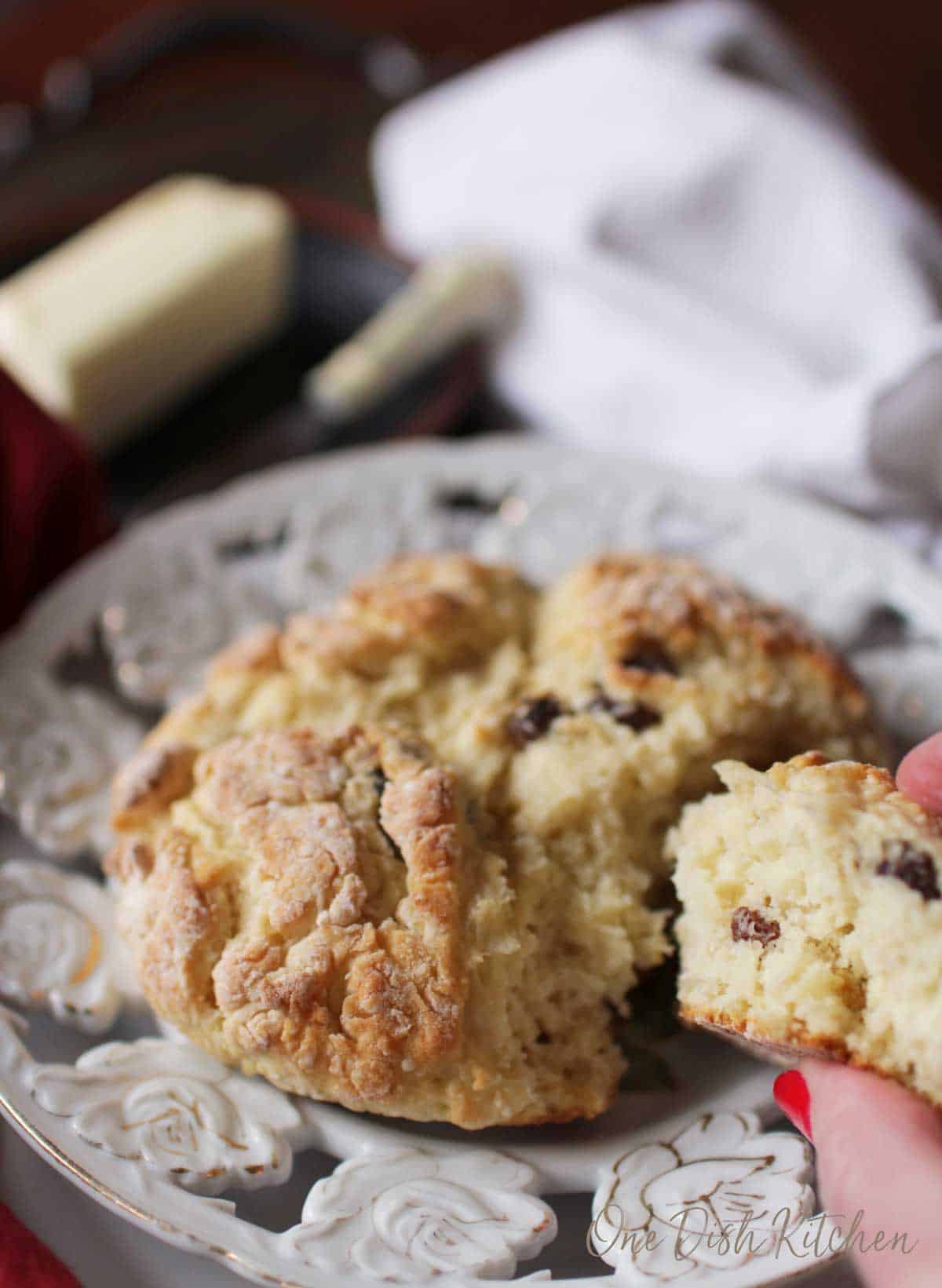
Follow these clear and simple steps for a deliciously authentic Mini Irish Soda Bread, perfect for any occasion.
Expert Tips
- Even Mixing: Ensure the dry ingredients are thoroughly mixed before adding the buttermilk.
- Minimal Handling: Avoid overworking the dough. Irish Soda Bread is best when the dough is handled minimally. It should appear a bit shaggy and rough, not smooth. This ensures a tender and properly textured bread.
- Scoring the Dough: Always score the top with an “X” or a cross shape. This traditional technique isn’t just for looks; it helps the heat penetrate the center of the loaf, ensuring even baking.
- Watch the Oven: Every oven is different. Start checking the bread a few minutes before the suggested baking time.
Serving Suggestions
In need of some serving inspiration? Here are a few ideas to enjoy your Mini Irish Soda Bread:
- With Soup: Perfect for dipping into your a bowl of Tomato Soup or Chicken Stew.
- Breakfast Toast: Toast slices and top with butter and jam or make Avocado Toast with slices of avocado and tomatoes.
- Cheese Pairing: Serve with a selection of cheeses for a simple, satisfying snack.
- Sandwich Base: Use it as a hearty base for a Reuben sandwich.
- With Tea: Enjoy a slice with a warm cup of tea for a cozy afternoon treat.
Frequently Asked Questions
To keep your Irish Soda Bread fresh, first let it cool completely. Once cooled, wrap it tightly in plastic wrap or place it in an airtight container. It can be stored at room temperature for up to 3 days, ensuring you enjoy its freshness. For longer storage, the bread freezes well for up to 3 months. Simply thaw and reheat when ready to enjoy again.
This particular recipe for Mini Irish Soda Bread is designed to produce one small loaf. It’s approximately a quarter of the size of a standard Irish soda bread loaf, making it perfect for smaller households or individual servings. Enjoy the traditional taste in a convenient, smaller size.
Ways To Use Leftover Ingredients
If you have any ingredients leftover from this Irish soda bread recipe, check out our Leftover Ingredients Recipe Finder or you might like to consider using them in any of these single serving and small batch recipes:
RELATED: Single Serving Comfort Food Recipes
For more information on the cooking and baking dishes I use in our “recipes for one”, please visit our FAQ page.
For examples of the dishes used at One Dish Kitchen, please visit our Store page.
RELATED: 15 Easy Dessert Recipes For One
If you’ve tried this Irish soda bread or any recipe on One Dish Kitchen please let me know how you liked it by rating the recipe and telling me about it in the comment section below.
Also, if you take a picture please tag us on Instagram (@onedishkitchen) we’d love to see it!
Mini Irish Soda Bread
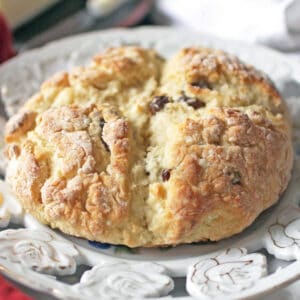
Equipment
Ingredients
- 1 cup all purpose flour
- 1 ½ teaspoons sugar
- ¼ teaspoon salt
- ¼ teaspoon baking soda
- 1 tablespoon salted butter , cold
- ¼ cup raisins
- 1 large egg yolk
- ½ cup buttermilk
Instructions
- Heat oven to 425 degrees F (220 degrees C).
- Whisk flour, sugar, salt, and baking soda together in a medium-sized mixing bowl.
- Cut the butter into small pieces and work the butter into the flour using your fingers or a fork until it resembles coarse crumbs. Stir in the raisins.
- In a small bowl, whisk together the egg yolk and buttermilk. Pour into the dry ingredients and mix with a spoon until just combined.
- Turn the dough out onto a lightly floured work surface. Knead very lightly and form a 4-inch circle. (Add a little more flour to the dough if the dough becomes too sticky to handle). Do not over-knead!
- Using a serrated knife, score top of dough about an inch and half deep in an “X” shape.
- Place dough on a baking sheet and bake until bread is golden, about 35-40 minutes.HINT: If the top of the bread is getting too dark while baking, place a sheet of aluminum foil over the top.
- Serve bread warm or at room temperature.
Notes
- Even Mixing: Ensure the dry ingredients are thoroughly mixed before adding the buttermilk.
- Minimal Handling: Avoid overworking the dough. Irish Soda Bread is best when the dough is handled minimally. It should appear a bit shaggy and rough, not smooth. This ensures a tender and properly textured bread.
- Scoring the Dough: Always score the top with an “X” or a cross shape. This traditional technique isn’t just for looks; it helps the heat penetrate the center of the loaf, ensuring even baking.
- Watch the Oven: Every oven is different. Start checking the bread a few minutes before the suggested baking time
Nutrition
The information shown is an estimate provided by an online nutrition calculator. It should not be considered a substitute for a professional nutritionist’s advice.

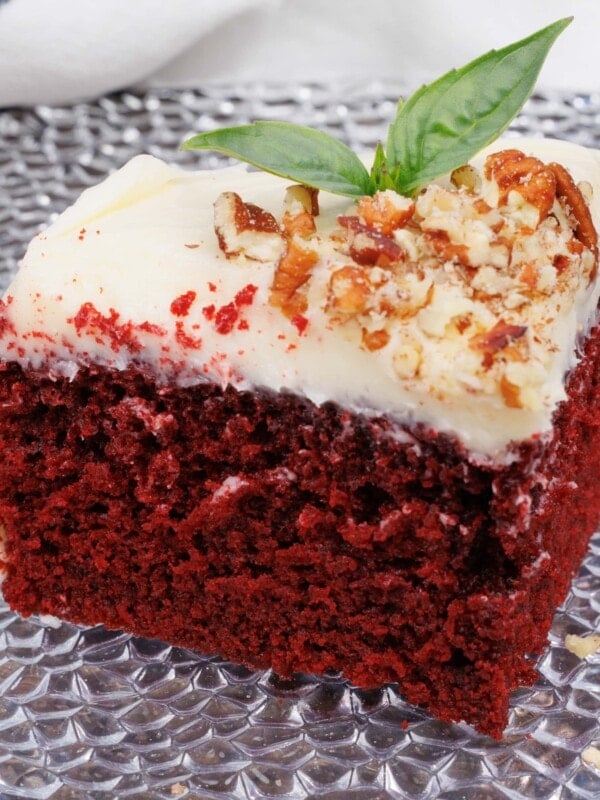
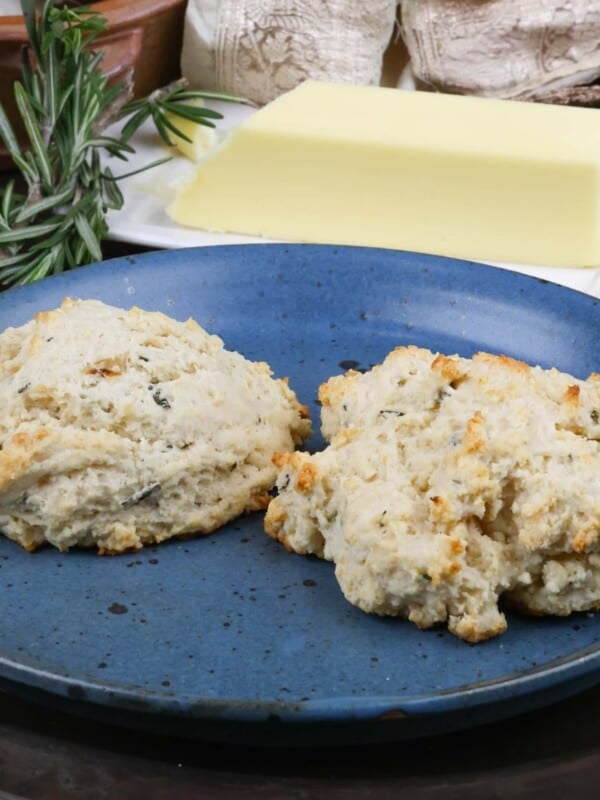
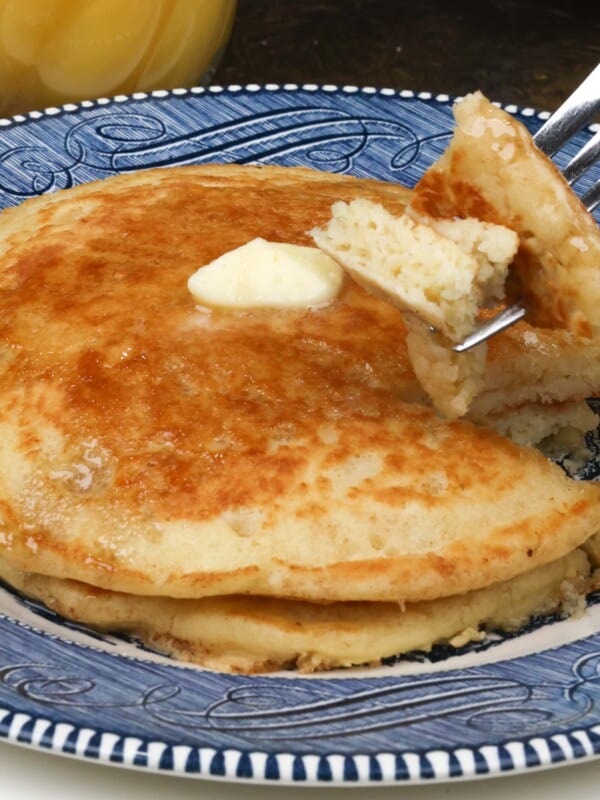
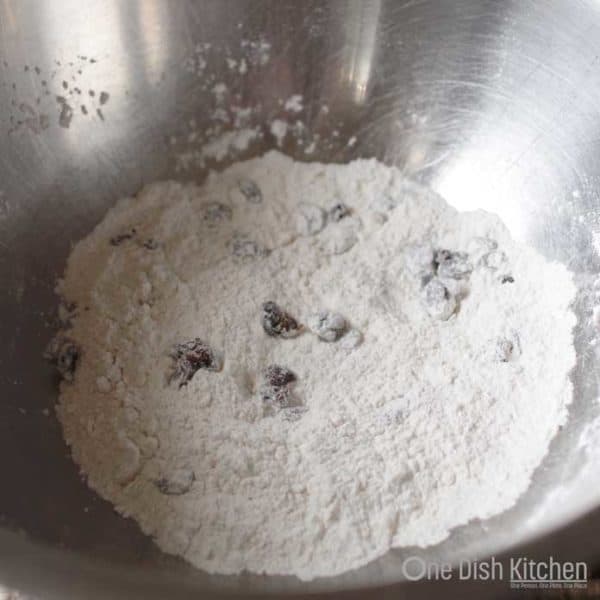
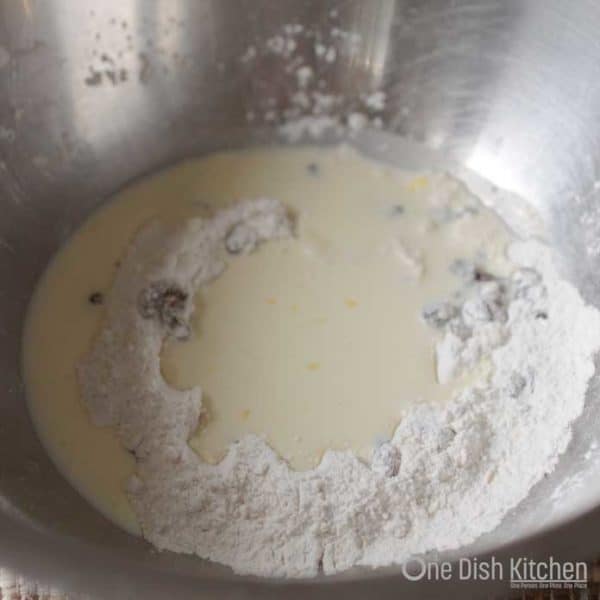
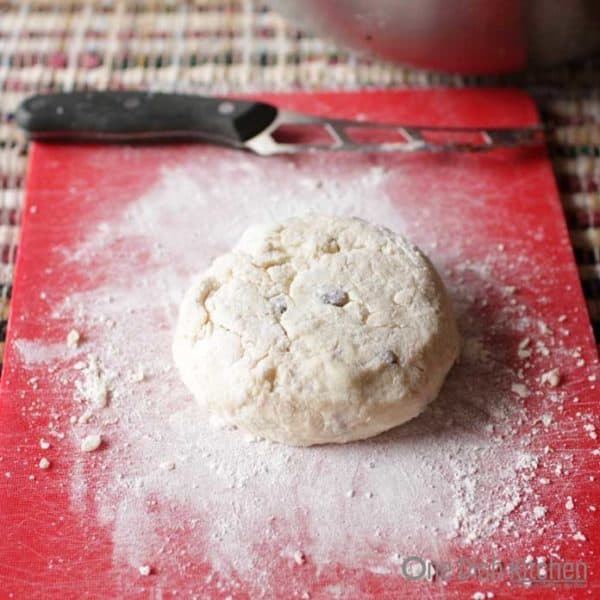
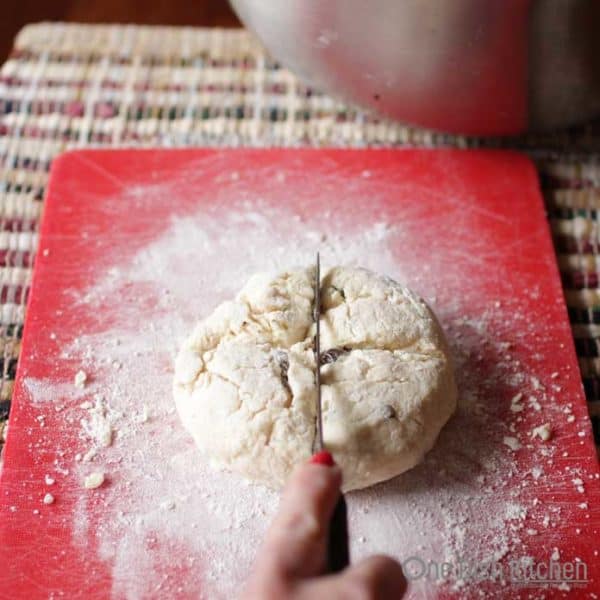
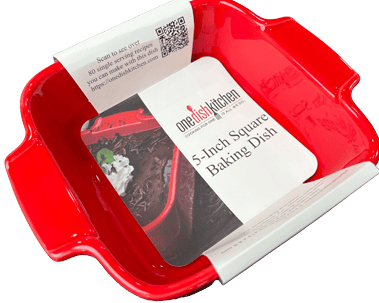









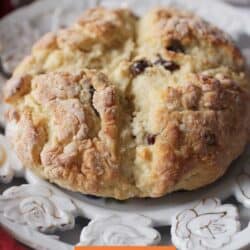
I love adding 1-2 teaspoons of Caraway seeds.
The dough was wildly sticky when I attempted to put it on my floured work surface. Thoughts?
I added more flour slowly (difficult to not work the dough to much lol). Tasted good and I want to make again.
Thank you for all your recipes.
I found this recipe was so easy to make, it is also delicious. I left the dried fruit out as I don’t like it in anything else, it didn’t make any difference. Thank you for your great recipes, when you live by yourself it is difficult to find small size recipes.
This was easy to make and bake! I liked that it just made a small loaf. We loved the taste of it! It is at it’s best toasted! I expected it to be hard and crunchy after it was toasted but it was so tender. My favorite way to eat it! Loved it! I will be making it again and again! Thanks for the recipe!
I’m so happy you enjoyed it!